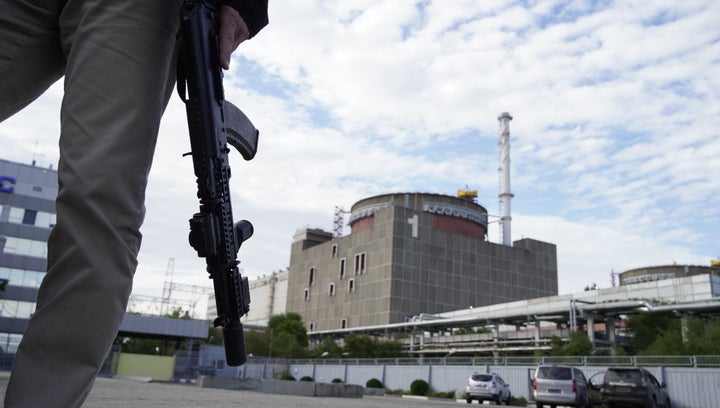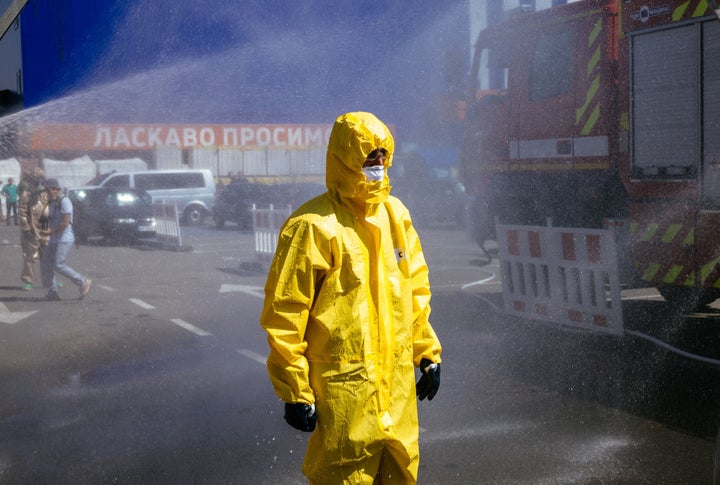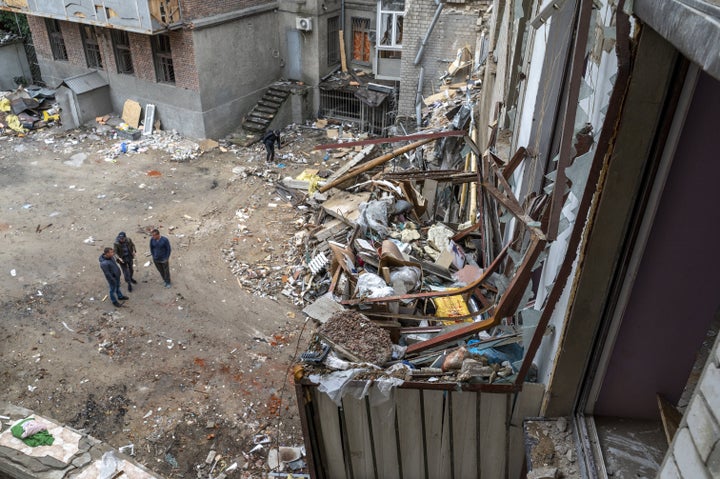In the early 2000s, with the threat of climate change coming into focus, the declining nuclear power industry, with its capacity to generate huge volumes of emission-free electricity, looked to be on the cusp of a revival. Then the 2011 disaster at the Fukushima atomic generating station in Japan stoked old fears that nuclear energy could never be safe enough.
Japan mothballed its reactors. Germany fast-tracked shutting down its whole fleet. The U.S. gave up on its nuclear ambitions, abandoning its Yucca Mountain waste-disposal project and permanently closing dozens of safe but financially uncompetitive reactors.
A decade later, soaring emissions, failing power grids and buckling renewable-energy supply chains are already setting the groundwork for a new nuclear power renaissance. Once Russian tanks rolled into Ukraine and gas markets became a key battleground in the global conflict, even anti-nuclear stalwarts started embracing atomic power. In a matter of weeks, Japan ordered its old plants reopened and new reactors built, Germany opened the door to keeping its remaining facilities running and California lawmakers voted to save the state’s last nuclear station.
Now, though, battles raging around the Zaporizhzhia Nuclear Power Plant in southeastern Ukraine risk triggering the first major radiation accident since Fukushima, unleashing chaos in a war zone where Russia has already threatened to use atomic weapons. At present, crews have kept Europe’s largest nuclear station running even as shells explode around its six reactors. On Sunday, Energoatom, Ukraine’s state-owned nuclear operator, said it has powered down the plant’s last operating reactor, reducing the risk of any kind of accident.
But the International Atomic Energy Agency, the United Nations’ nuclear watchdog, warned Friday that the situation was “unsustainable” and “becoming increasingly precarious” after shelling in a neighboring town destroyed electrical infrastructure that the plant depends on as a backup to keep its cooling systems running.
“This is completely unacceptable,” IAEA chief Rafael Grossi said in a video statement. “It cannot stand.”
If the worst happens, would a disaster at Europe’s largest nuclear plant prove a setback for an industry whose nascent comeback could make quitting fossil fuels much easier?

There is no obvious answer, in part because the scale of any radiation leak resulting from something as unpredictable as artillery combat is impossible to predict. An accident would almost certainly temper demand for nuclear power in some places; citing just the potential for a disaster, Greenpeace urged the European Union to disqualify reactors from green energy funding. But experts in the industry say that what happens in Ukraine is unlikely to derail most countries’ newfound atomic ambitions.
“I don’t see one incident that I can imagine that is going to turn back the tide or flip the coin on nuclear,” said Craig Piercy, chief executive of the nonprofit American Nuclear Society. “A military-driven destruction of something is not going to sour people. Frankly, I feel like the support is building and it’s durable.”
Attitudes toward nuclear energy vary by country. In Finland, where reactors generate a huge chunk of the country’s electricity, support for atomic energy is exceptionally high. In the United States, separate surveys over the past year from the pollsters Ipsos, Gallup and the Pew Research Center show Americans are split on fission. In Germany, where the government has pursued one of the world’s most aggressive nuclear phaseouts, a major national poll in August found that only 15% of Germans supported the current plan, suggesting a major divide between the country and its leaders.
But the relationship between public opinion and the past nuclear accidents isn’t as direct as it may seem. After each of the world’s three major nuclear power disasters ― the 1979 partial meltdown at Pennsylvania’s Three Mile Island, the 1986 Chernobyl catastrophe and the earthquake and tsunami at Fukushima ― it took three years for public support for atomic energy to drop, according to an analysis of polling data released last year.
While politicians in Germany and South Korea moved swiftly to shutter nuclear plants after the most recent accident in Japan, a study by Ann Bisconti, a longtime nuclear industry consultant whose surveys have tracked public opinion on atomic energy for decades, found that support for nuclear energy dropped well after the disasters as a result of shifting politics around energy, namely that the demand for new reactors decreased because the global supply of fossil fuels increased.
“What happened was the need for nuclear energy was the driver of public attitudes, not the accidents,” Bisconti said. “If there’s a strong need, I think the same may be true now.”
Over the past seven decades, atom-splitting reactors have safely generated stupendous sums of electricity in more than 30 countries ― with few exceptions. Just four people died from radiation in three of the four worst accidents in the history of nuclear energy. But the 1986 Chernobyl meltdown, about 500 miles north of the Zaporizhzhia plant, irradiated a vast area and caused a spike of thousands of cases of thyroid cancer, making the stakes of a full-scale nuclear disaster easy for anyone with an HBO subscription to visualize.
Experts caution that a repeat of the Soviet-era disaster is nearly impossible and that artillery hitting other industrial facilities, such as chemical plants, could do as much if not more damage.
The reactors at the so-called ZNPP are differently designed machines altogether, devoid of the features that doomed Chernobyl. Unlike Chernobyl’s “fundamentally unstable” reactors, virtually all modern reactors, including those at ZNPP, are “designed to operate in a stable state,” according to Jaakko Leppänen, a researcher and expert in reactor safety in Finland, which generates much of its electricity from fission.

“This means that the energy-producing chain reaction is a self-regulating process that does not require external control or special adjustment measures to maintain it,” Leppänen wrote in a recent blog post, translated from Finnish using Google software. “The power of the reactor cannot start increasing without reason. Even in the event of a disturbance, the chain reaction breaks off by itself when the temperature rises high enough.”
Shutting down a nuclear reactor is no simple task. The reactor fuel continues to produce residual heat that requires active cooling systems, which usually circulate cold water. If the electricity powering those systems fails ― as happened in Fukushima, when the tsunami destroyed backup generators ― “the result can be overheating and melting of the fuel,” Leppänen said.
“These backup systems are in a way also the institution’s weak point,” Leppänen wrote. “Damage to a single device or system does not on its own endanger the cooling of the reactor, but if the plant is deliberately destroyed, the risk is the simultaneous loss of all electrical systems.”
Even then, the ZNPP reactors have something Chernobyl lacked: a thick concrete dome enclosure over the reactors themselves.
After five years, spent fuel, which remains dangerously radioactive for thousands of years, is moved outside the dome to air-cooled storage systems called dry casks. Long-cooled fuel produces less heat, and many of its most dangerous radionuclides, such as iodine-131, have already had time to disappear through radioactive decay, Leppänen wrote. But a direct missile strike could cause radiation to leak into waterways.
The Russians and Ukrainians blame each other for continuing the shelling. Tea Törmänen, a pro-nuclear environmental advocate in Finland, said that “it’s not in anyone’s interest to damage the plants.”
“To the Russians, it’s an asset, so destroying them wouldn’t make sense, and it’d mostly harm the soldiers in the area,” she said.
A Russian attempt to permanently annex the facility could be another potential threat. For now, the plant depends on power systems Ukraine controls to safely operate. In an Aug. 25 interview with the U.S. government-funded Voice of America news service, an anonymous engineer at the ZNPP accused the Russians of wanting “to arrange a small accident and stop ZNPP for a short time, then supply us with electricity from Crimea and automatically switch the nuclear power plant to the Russian energy system.”
Calling that a “very dangerous plan,” the engineer said the “Russians have not touched the management of the nuclear power plant, although I think it will happen soon. The pressure is getting stronger.”
Last week, shelling in the neighboring city of Enerhodar, where much of the ZNPP’s staff and their families live, destroyed the electrical infrastructure and caused a total blackout, which left the plant reliant on the lone reactor that had been running until Sunday. But the IAEA said “operating a reactor at low power is not a sustainable solution for a longer period because it could over time damage key equipment of the nuclear power plant, such as electricity-producing turbines and pumps.”
While a backup power line to the Ukrainian grid was eventually restored on Sunday, the uncertain connection means the plant will depend on its 20 diesel generators to keep systems running if there’s another blackout.

“We are trying to keep this unit running as much as possible, but eventually it will have to be shut down and then the station will switch to diesel generators,” Petro Kotin, head of Energoatom, told The Associated Press on Thursday, adding that such generators are “the station’s last defense before a radiation accident.”
A controlled nuclear accident at ZNPP would be unlikely to upend the nuclear industry’s revival plans, said Najmedin Meshkati, a University of Southern California nuclear engineering expert who studied the Fukushima catastrophe.
After years of struggling to build large-scale reactors on time and on budget, the U.S. and other countries are banking on the commercialization of small modular reactors, scaled-down fission machines that can be manufactured to be safer and less expensive. The novelty of the technology could offer an industry dogged by bad perceptions a chance to rebrand.
Recalling a conversation with the late Hungarian chemist George Olah, Meshkati quoted the Nobel laureate as saying, “You guys in the nuclear industry, you’re not as smart as doctors.”
Asked why, Olah told him: “MRI technology used to be called nuclear magnetic resonance imaging. But the medical industry dropped the nuclear part from the name. It’s just MRI.”
That, Meshkati said, represented “exactly the transformation that will happen in public relations” once the small modular reactor industry takes off. Nuclear safety regulators in the U.S. and elsewhere are currently assessing various so-called SMR applications. Industry analysts generally suggest the sector could become viable in the early 2030s.
But humans tend to “overreact to extreme risks and underestimate slower-moving, less dramatic risks,” said Rich Sorkin, chief executive of Jupiter Intelligence, a U.S.-based consultancy that models climate risk.
“It’s not a surprise that there’s a phrase ‘If it bleeds, it leads,’” he said. “There’s no question that a nuclear disaster is at the top of things that people would be focused on from a distance.”
The pinch of soaring energy prices and the high probability of rationing fuel across Europe this winter are more likely to “top everyone’s priorities right now,” Törmänen said. Anyway, she said, radiation is hardly the only potential disaster from warfare.
“There are many other chemical plants that are very dangerous if there’s a war, but nobody’s talking about ending the production of many chemicals that are very dangerous,” Törmänen said. “It seems like a ridiculous idea that we plan our energy system in all countries based on what we would do if there’s a war in our country.”
Bisconti, the nuclear industry consultant, said an accident may still prove a setback for nuclear energy in countries like Germany.
“But what countries decide to do versus public opinion are not necessarily the same thing,” she said.

